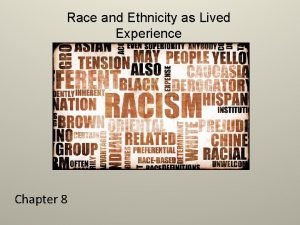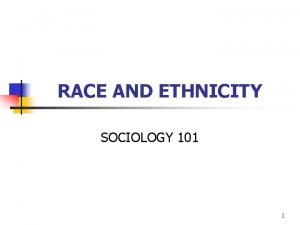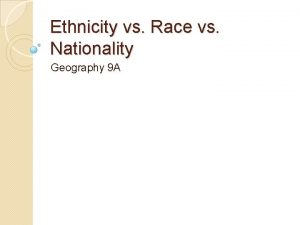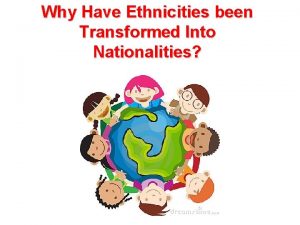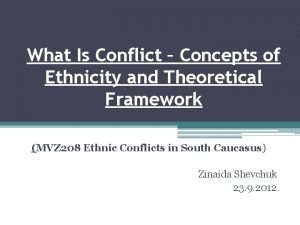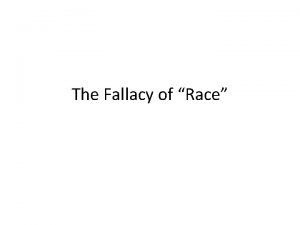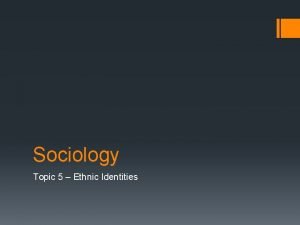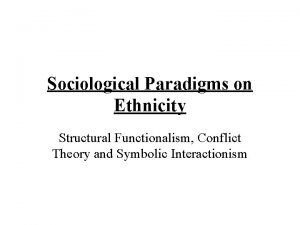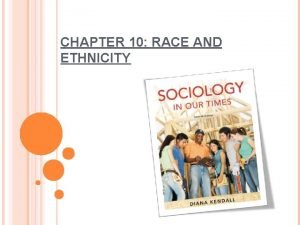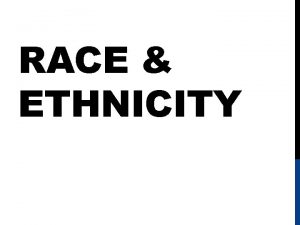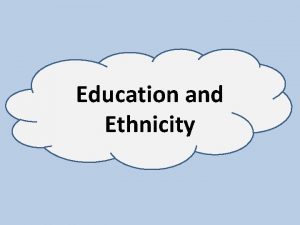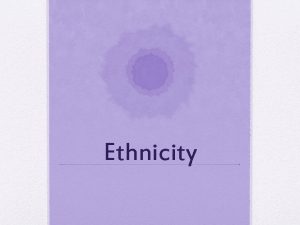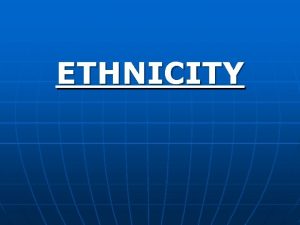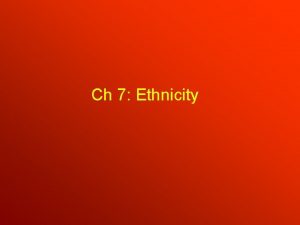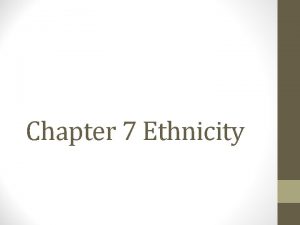RACE AND ETHNICITY Chapter 5 Race and Ethnicity










- Slides: 10

RACE AND ETHNICITY Chapter 5 – Race and Ethnicity - Sociology

Race: Myth and Reality Race: A group of people with inherited physical characteristics (skin color, hair texture, eye hues) that distinguish it from another group. Myths About Race Some races are superior to other races A “pure” race exists

Race: Myth and Reality Genocide: The attempt to destroy a group of people because of their race or ethnicity. Ex: Adolf Hitler and the Holocaust Ex: Hutus vs. Tutsis in Rwanda Race is arbitrary – biologists can’t agree on how many races exist

Ethnic Groups Ethnicity: Having distinctive cultural characteristics Ethnic groups identify with each other on common ancestry and cultural heritage Nation of Origin Food Clothing Language Music Religion

Ethnic Groups Race and ethnicity are often confused Ex: Jews are an ethnic group, not a race

Minority Groups and Dominant Groups Minority Group: People who are singled out for unequal treatment and who regard themselves as objects of collective discrimination. Minorities share several conditions worldwide: Their physical or cultural traits are held in low esteem by the dominant group They are treated unfairly by the dominant group They tend to marry within their own group

Minority Groups and Dominant Groups The conditions in which minority groups live tend to create a sense of identity (“we-ness”) and common destiny. Minority groups are not necessarily numerical minorities Ex: British discrimination against Indians in India Ex: Dutch discrimination (apartheid) against blacks in South Africa

Minority Groups and Dominant Groups Dominant Group: The group with the most power, greatest privileges, and highest social status. Often possesses political power Unified by shared cultural traits

Minority Groups and Dominant Groups A group becomes a minority in one of two ways: Through Ex: The U. S. taking over Mexico in 1848 Through Ex: the expansion of political boundaries migration (voluntary or involuntary) Mexicans coming to the United States Ex: African slaves being brought to the United States

Constructing Racial-Ethnic Identity Heightened Sense of Ethnicity • Smaller Numbers • Lesser Power • Different from “National Identity” • Discrimination Low Sense of Ethnicity • Part of the Majority • Greater Power • Similar to “National Identity” • No discrimination
